What Walking Alone For 11 Hours In Northern Spain Taught Me
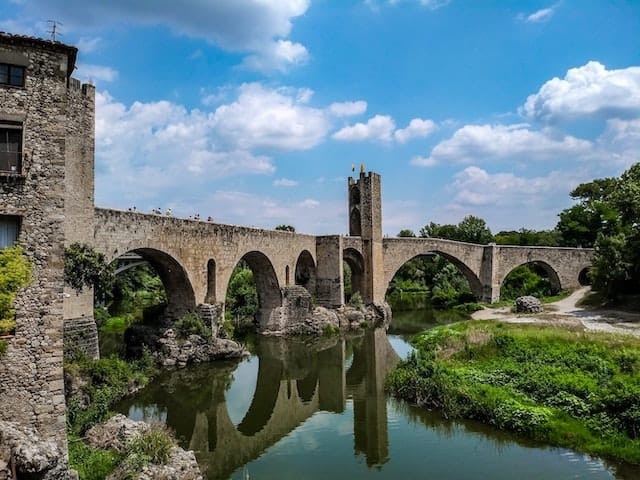
Sometimes I like to walk.
Today I walked from Olot, Spain to Santa Pau and back. It took about 11 hours. I don’t know exactly how far that is but if you go the direct route it’s only 10km one way. I took the winding trail, climbed up a few volcanos and then down a crater.
In this region of Northern Spain, The Garrotxa Zona Volcanica Region, there is quite an extensive network of hiking trails. The region is formed by about 40 volcanic cones, some explosion craters, and 20 or so basaltic lava flows. Basaltic lava is the most abundant lava on earth, and is also known as mafic lava. Mafic lava is molten rock that is enriched in iron and magnesium and low in silica. When mafic lava cools on the earth’s surface, it forms basalt.
The soil is red and clay-like. Tree roots form natural steps to aid your ascent.
Basaltic lava is so abundant because it is the product of melting the mantle, which makes up the majority of the earth’s volume. Volcanic melts usually begin in the mantle, which is why basaltic melts are so plentiful.
A lot of the hiking trails in the region follow the paths of these ancient lava flows; you find yourself climbing up the side of a volcano through a rocky, uneven gorge etched deeply into the earth. The soil is red and clay-like. Tree roots form natural steps to aid your ascent. In Olot, I stayed at the Hotel Estacio. It’s more expensive than a hostel but the rooms are surprisingly modern and have AC. The couple who run the place also operate an attached cafe bar. The food is not fancy but it is exceptionally good. The one night I ate there, after my 11 hour hike, I had the filet and fries and the baked vegetables. I ate every morsel.
The tourist office in Olot, which is near the bus station, sells a very helpful hiking map and guide of the area for 11 euros – definitely worth it. Besides the local trails that traverse the nature reserve (which encompasses pretty much the entire region), there are also long distance trails that go through it. I spent some time on the GR 83, or the Cami del Nord, that begins on the Mediterranean coast in Mataro. It runs for over 200km and ends in Prada de Conflent. I was also on the GR 2 that runs from Besalu to Falgars d’en Bas.
The Itinerannia network of footpaths also runs throughout the region. The Itinerannia hiking trails stretch over 2500 km and are marked with a yellow horizontal paint slash. The GR trails are marked with white and red horizontal slashes.
What Walking Alone for 11 Hours in Northern Spain Taught Me.
Another trail of note, is the Olot-Girona Cycleway which runs along the old route of the Olot railway. It’s possible to walk or cycle this trail. It passes right by the Hotel Estacio along the bank of the Fluvia River.
This area of Northern Spain isn’t overrun with tourists, even in the summer months. You can hike from town to town quite easily along the well marked trails. The area is predominately safe to hike on your own as a woman. No one seemed particularly surprised to see me out by myself and then locals were especially friendly, greeting me with ‘Bon dia’ and smiling.
I went through the Fageda d’en Jorda, a forest of beech wood that has developed on top of the lava flow from the Volca de Croscat and is considered its own unique ecosystem. Then I went up and around the Volca de Santa Margarida, Volca de Rocanegra, Volca de Croscat, and one other one I think.
On the way there, early this morning, I hardly saw anyone, except some dogs who wanted me to throw sticks, as well as a crazy guy running up the side of the Volca de Santa Margarida. In the afternoon, on my way back, I passed quite a lot of people out hiking. I always wonder why people are so loud out in nature…or is it that their voices carry more?
I always wonder why people are so loud out in nature…or is it that their voices carry more?
I saw lots of cool things along the way. Down in the crater formed by the Volca Magarida, is the small stone church of Saint Margaret. The church is the only thing in the clearing. The town of Santa Pau is a medieval town with lots of arches, an old church, and an interesting sculpture. At the base of one of the curved walls that surround the inner town, is a statue of a child, about 20″ tall. She is leaning against the wall with her head down.
Gracias to the Iglesia de Sant Miguel Sacot for the only outdoor water fountain that was working, and also for what seemed to be some sort of shrine/alter with the statue of an angel with some kind of animal.
While biking, it’s easy to outrun your demons. But when you’re out walking, they settle in next to you. This means that you have to figure out a way to deal with them so that they’ll go their own way and leave you be. That’s exactly what I did today.
Photo credit forWhat Walking 11 Hours Alone in Northern Spain Taught Me by Unsplash.


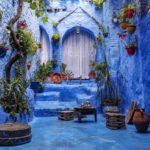

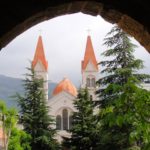
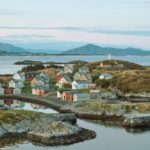
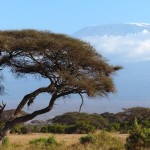
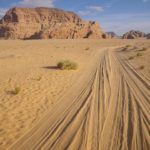

Hi, my name is Albert and I´ve just read your post at pinkpangea.com and i think that the article is very good. I work in a social project with people with disabilities or with diferent capacities, the center its a yougurt factory where we make the best yougurt on earth, or we like to think so. www.fageda.com We show it to the visitors. It´s near your trail. In my webpage garrotxa.info i share landscapes, popular walkings, mountain races and other kind of things that helps people to find themselves.
Congratulations for your great work and keep on sharing the good things. “Bona nit” and smile. Albert Terradellas Brugada.
Enjoy the Landscapes of La Garrotxa’s at… http://www.garrotxa.info/natura or in our Youtube Channel https://www.youtube.com/user/Garrotxainfo/videos